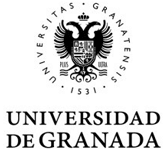- Origin and characteristics of discourses relating women and peace in the patriarchal societies of the ancient world.
- Ways of representing peace as a body, feminine potential and virtues in the origins of Western culture, and why and how peace was given a feminine image by the existing powers.
- Concept and representation of peace in early Christianity through a feminine discourse and mindset.
- First voices of women who defended Peace, such as Christine de Pizan, and their contribution to the account of the creation of the discourse on peace at the start of modernity.
- The idea of peace in the works of Spanish women in the courtier and intellectual circles of the Renaissance and Baroque periods who participated actively in the Querelle des femmes.
- Continuity and changes in the association between women and peace in artistic representations of the Renaissance, specifically through the different cycles of 16th-century iconography.
- Peace, freedom and other civic values in the enlightened and romantic contexts of the 19th century, exploring the journeys of women such as Mariana Pineda and other enlightened women.
- Discourses on peace of 20th-century Spanish women according to different ways of thinking about it and representing it. This includes the discourses of female thinkers, activists and feminists such as Carmen de Burgos, María García Torrecillas and María Zambrano, as well as those of female avant-garde artists such as Juana Francisca Rubio, Francisca Bartolozzi, Remedios Varo and Delhy Tejero, among others.
- Gender representations and discourses on peace during the Spanish Civil War and by populations in exile due to its consequences, both in written texts and posters, graphic illustration, plastic arts, pacifist stories during the Spanish Civil War and the discourses on peace of female artists in exile.


